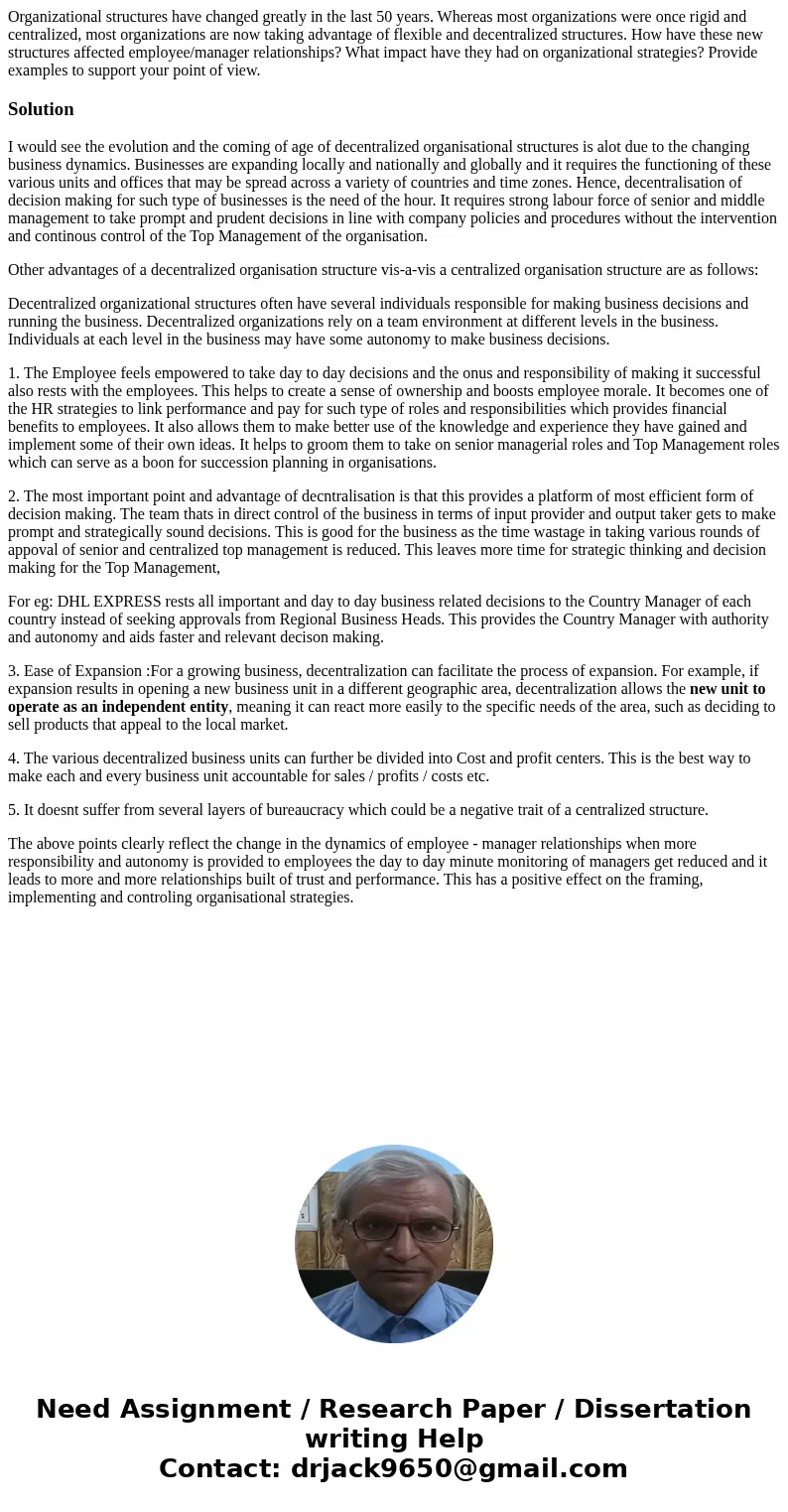Organizational structures have changed greatly in the last 5
Organizational structures have changed greatly in the last 50 years. Whereas most organizations were once rigid and centralized, most organizations are now taking advantage of flexible and decentralized structures. How have these new structures affected employee/manager relationships? What impact have they had on organizational strategies? Provide examples to support your point of view.
Solution
I would see the evolution and the coming of age of decentralized organisational structures is alot due to the changing business dynamics. Businesses are expanding locally and nationally and globally and it requires the functioning of these various units and offices that may be spread across a variety of countries and time zones. Hence, decentralisation of decision making for such type of businesses is the need of the hour. It requires strong labour force of senior and middle management to take prompt and prudent decisions in line with company policies and procedures without the intervention and continous control of the Top Management of the organisation.
Other advantages of a decentralized organisation structure vis-a-vis a centralized organisation structure are as follows:
Decentralized organizational structures often have several individuals responsible for making business decisions and running the business. Decentralized organizations rely on a team environment at different levels in the business. Individuals at each level in the business may have some autonomy to make business decisions.
1. The Employee feels empowered to take day to day decisions and the onus and responsibility of making it successful also rests with the employees. This helps to create a sense of ownership and boosts employee morale. It becomes one of the HR strategies to link performance and pay for such type of roles and responsibilities which provides financial benefits to employees. It also allows them to make better use of the knowledge and experience they have gained and implement some of their own ideas. It helps to groom them to take on senior managerial roles and Top Management roles which can serve as a boon for succession planning in organisations.
2. The most important point and advantage of decntralisation is that this provides a platform of most efficient form of decision making. The team thats in direct control of the business in terms of input provider and output taker gets to make prompt and strategically sound decisions. This is good for the business as the time wastage in taking various rounds of appoval of senior and centralized top management is reduced. This leaves more time for strategic thinking and decision making for the Top Management,
For eg: DHL EXPRESS rests all important and day to day business related decisions to the Country Manager of each country instead of seeking approvals from Regional Business Heads. This provides the Country Manager with authority and autonomy and aids faster and relevant decison making.
3. Ease of Expansion :For a growing business, decentralization can facilitate the process of expansion. For example, if expansion results in opening a new business unit in a different geographic area, decentralization allows the new unit to operate as an independent entity, meaning it can react more easily to the specific needs of the area, such as deciding to sell products that appeal to the local market.
4. The various decentralized business units can further be divided into Cost and profit centers. This is the best way to make each and every business unit accountable for sales / profits / costs etc.
5. It doesnt suffer from several layers of bureaucracy which could be a negative trait of a centralized structure.
The above points clearly reflect the change in the dynamics of employee - manager relationships when more responsibility and autonomy is provided to employees the day to day minute monitoring of managers get reduced and it leads to more and more relationships built of trust and performance. This has a positive effect on the framing, implementing and controling organisational strategies.

 Homework Sourse
Homework Sourse